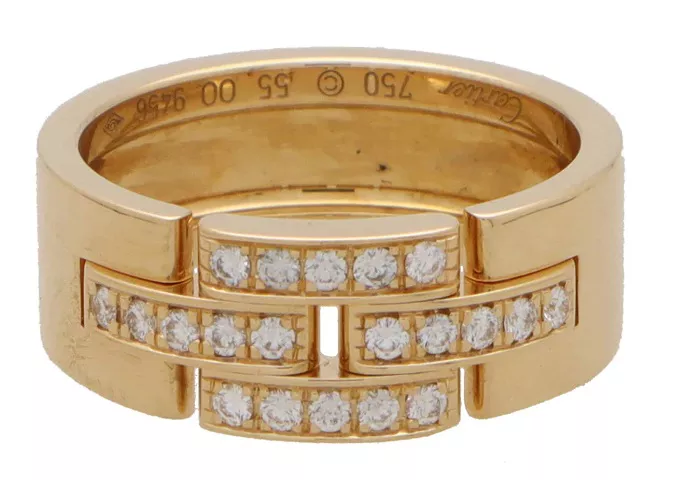Cartier is more than just a name in the world of luxury; it is a symbol of exquisite craftsmanship, refined taste, and timeless elegance. Founded in Paris in 1847 by Louis-François Cartier, the maison quickly established itself as a leading jeweler for royalty and aristocrats. Among its vast oeuvre, Cartier antique rings hold a special place—capturing the essence of historical epochs, stylistic innovation, and artisanal mastery. This article explores the multifaceted allure of Cartier antique rings, providing collectors and enthusiasts with an in-depth understanding of their provenance, design intricacies, and market significance.
The Historical Context: Cartier’s Role in Antique Jewelry Evolution
The history of Cartier rings is intricately linked to the evolution of jewelry styles from the late 19th century through the early 20th century. The brand played a pioneering role during periods such as the Belle Époque, Art Deco, and Retro eras. Cartier’s innovative approach combined traditional craftsmanship with emerging artistic movements, resulting in pieces that were not only decorative but also emblematic of their time.
During the Belle Époque (circa 1890-1915), Cartier embraced floral motifs, delicate filigree work, and the use of platinum, which allowed for lighter and more intricate ring designs. Moving into the Art Deco period (1920s-1930s), Cartier’s rings became bold statements of geometric precision, symmetry, and the vibrant use of colored gemstones. The Retro era (1940s-1950s) brought a more sculptural and voluminous approach, often featuring large, colorful stones set in yellow gold.
Characteristics That Define Cartier Antique Rings
Cartier antique rings are identifiable by a combination of design elements, craftsmanship, and material quality. These characteristics set them apart in the antique jewelry world and make them highly sought after by collectors.
Exceptional Craftsmanship
Each Cartier ring was meticulously handcrafted by expert artisans, ensuring precision and attention to detail. The maison’s workshops utilized cutting-edge techniques for their time, such as invisible settings and intricate engraving, to achieve flawless aesthetics and durability.
Use of Premium Materials
Cartier sourced the finest metals and gemstones. Platinum, often used during the Belle Époque and Art Deco periods, is a hallmark of Cartier rings, prized for its strength and ability to hold delicate settings. Diamonds, sapphires, emeralds, and rubies are common, with exceptional stones often hand-selected to complement each design.
Design Innovation
Cartier antique rings frequently showcase innovative settings that highlight the beauty and brilliance of gemstones. Notably, the use of “invisible settings” where stones appear to float without visible prongs, was popularized by Cartier and remains a hallmark of their craftsmanship.
Iconic Styles and Motifs in Cartier Antique Rings
The aesthetic variety of Cartier rings reflects the shifting tastes and cultural influences over decades. Here are some iconic styles and motifs you’ll often encounter:
Floral and Nature Motifs
Inspired by the natural world, Cartier’s early antique rings often featured delicate floral designs with intricately carved petals and leaves. These motifs align with the Belle Époque’s romantic and ornate sensibilities.
Geometric and Symmetrical Patterns
During the Art Deco period, Cartier embraced sharp angles, stepped forms, and symmetry, often combining diamonds with vibrant sapphires or emeralds. Rings from this era reflect the bold modernism of the 1920s and ’30s.
Retro and Sculptural Forms
In response to the austerity of World War II, Cartier’s Retro rings incorporated larger stones and bold gold settings with curved, voluminous shapes, evoking a sense of glamour and optimism.
Evaluating Cartier Antique Rings: What Collectors Should Know
For collectors, assessing the value and authenticity of Cartier antique rings requires knowledge of several key factors:
Hallmarks and Signatures
Genuine Cartier rings bear specific hallmarks and maker’s marks, often including the Cartier signature, metal purity marks, and sometimes individual craftsman’s marks. These details can help authenticate a piece and pinpoint its era.
Condition and Restoration
The condition of the ring greatly influences its value. While some restoration may be acceptable, over-restoration can reduce originality and worth. Collectors value pieces that have retained their original stones and settings with minimal alteration.
Provenance and Documentation
Provenance plays a critical role in the valuation of Cartier antique rings. Rings with documented history, including original purchase receipts, servicing records, or previous ownership by notable individuals, command higher prices.
Market Trends and Rarity
Cartier rings from limited production runs or unique custom designs are exceptionally rare and sought after. Keeping abreast of the Antique Market trends can help collectors make informed investment decisions.
The Cultural and Emotional Appeal of Cartier Antique Rings
Beyond their material worth, Cartier antique rings embody cultural narratives and personal stories. They represent eras of transformation, social change, and artistic innovation. For many collectors, owning such a ring is akin to possessing a piece of history that transcends time.
Moreover, Cartier’s reputation for elegance and exclusivity enhances the emotional value of these rings. Whether passed down as family heirlooms or acquired as investment pieces, these rings carry a legacy of beauty and refinement.
Where to Discover and Acquire Cartier Antique Rings
Locating authentic Cartier antique rings can be a challenge due to their rarity and desirability. Reputable auction houses, specialized antique dealers, and well-curated online platforms offer reliable access to these treasures.
Collectors often explore specialized resources such as Rare Antiques dealers or visit exhibitions that focus on Antique Jewelry Style to deepen their understanding and view pieces firsthand.
Additionally, annual fairs and the international Antique Market are excellent venues to discover Cartier rings among other high-value antique jewelry.
Conclusion
Cartier antique rings are more than decorative accessories; they are enduring symbols of artistic excellence, historical depth, and cultural significance. Their blend of timeless design, impeccable craftsmanship, and material quality ensures they remain coveted by collectors worldwide.
For those seeking to invest in or appreciate the rich heritage of antique jewelry, Cartier rings represent a pinnacle of achievement. They capture the spirit of their respective eras while continuing to inspire admiration and passion across generations.
By understanding the history, design principles, and market dynamics of Cartier antique rings, collectors can make informed choices that honor both the past and future of fine jewelry.

